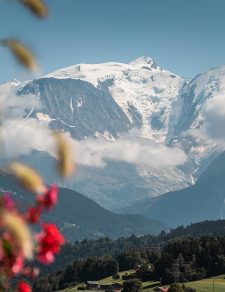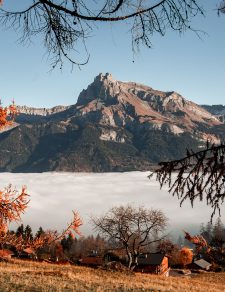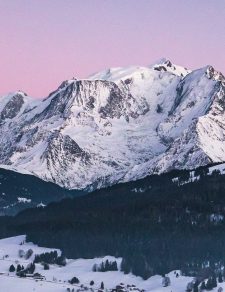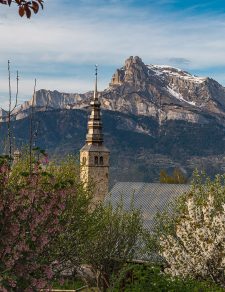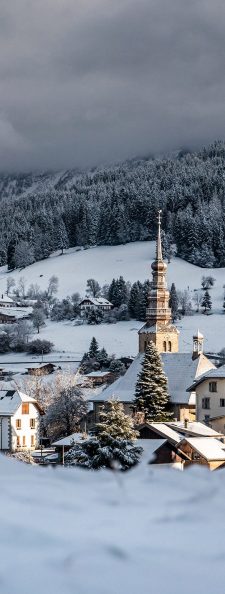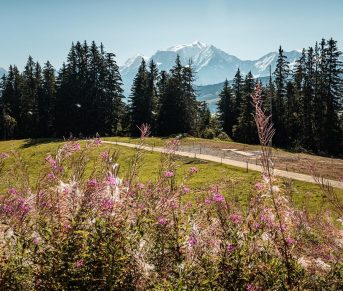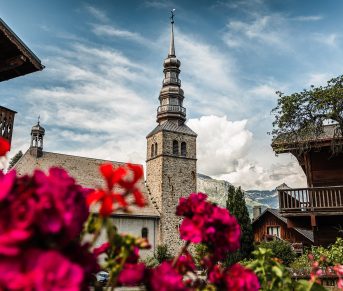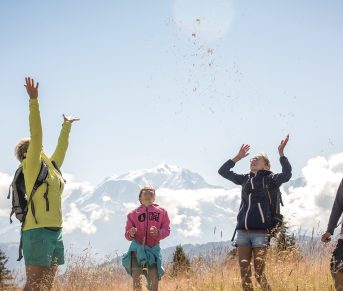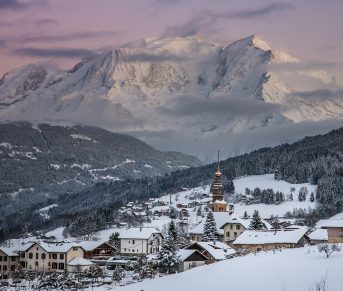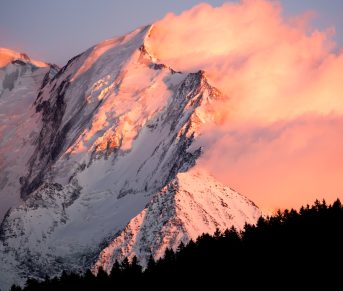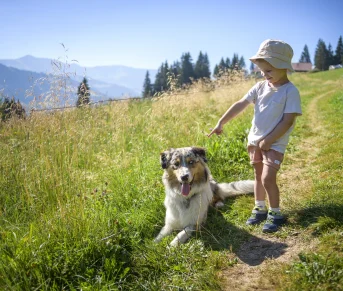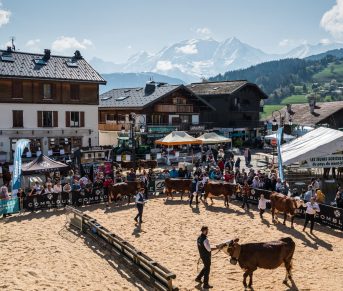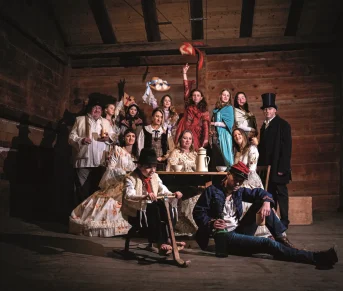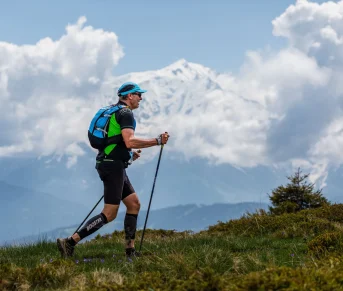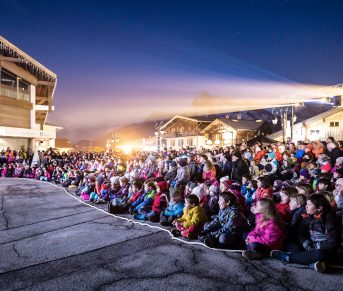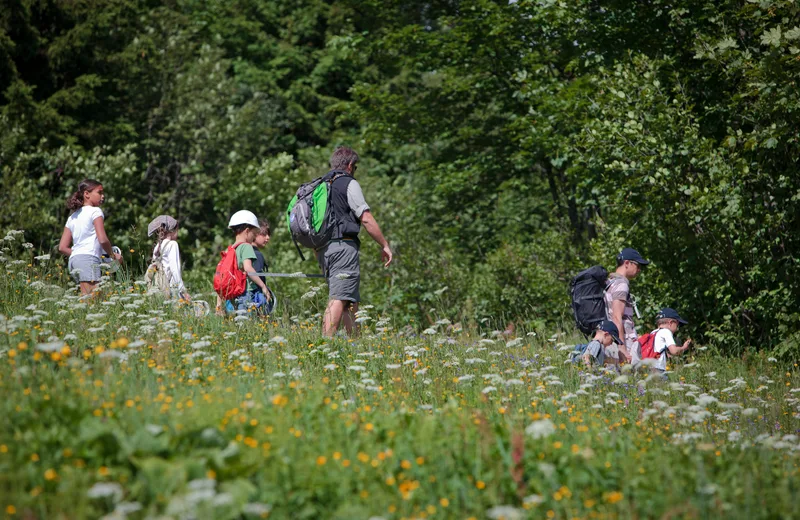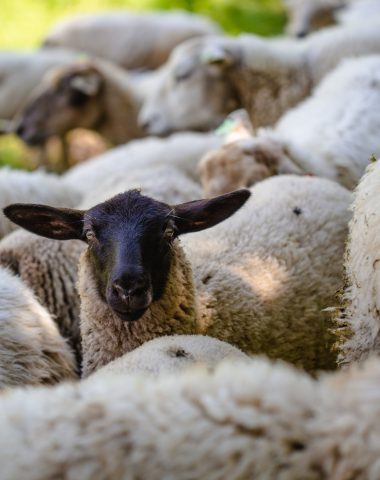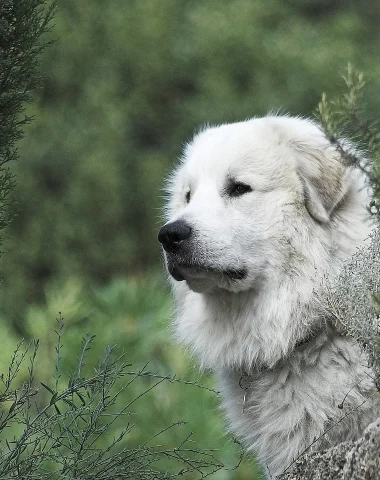In the heart of the Alps hides an incredible bird whose beauty and symbolism rises through the mountains: the black grouse. With its colorful plumage and captivating courtship dance, it is one of the most spectacular animals in our forests. Let's set off together to discover this emblematic species of alpine fauna.
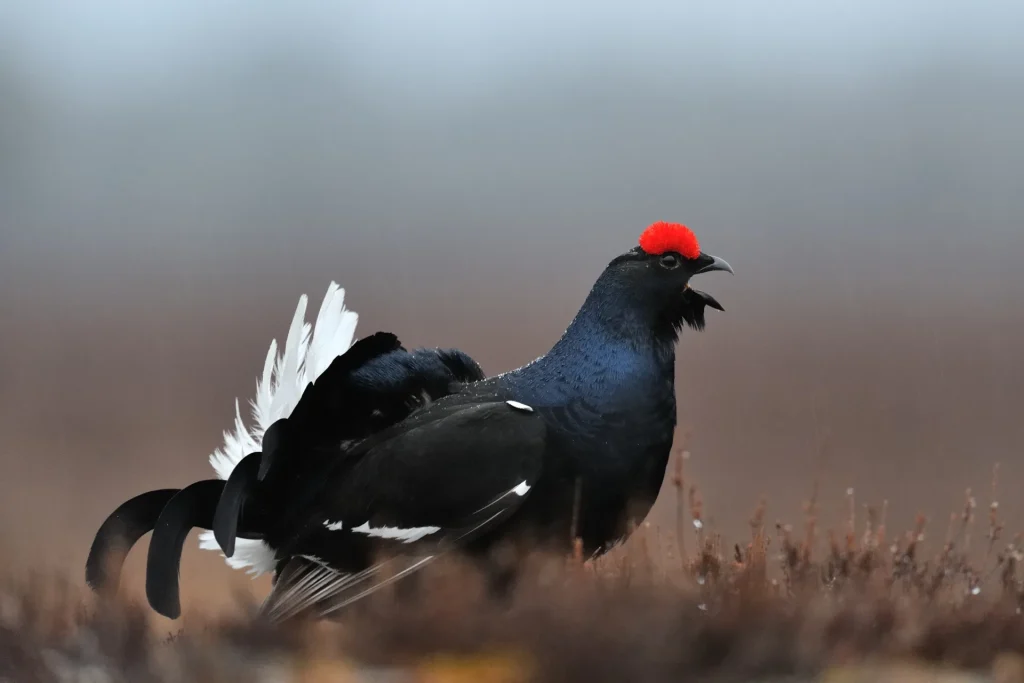
The black grouse is an emblematic bird of our mountains, it is also one of the guardians of our alpine ecosystems since it is an indicator of the good health of these habitats and its protection since 2018 has greatly benefited the other species that coexist with it on its breeding grounds.
Before going into more details, let's get to know each other!
Discovering an emblematic species of the Alps
What is a black grouse?
Indeed the name should speak to you, you lover of biology and birds! Be aware, however, that this big bird is rather discreet and that it is not easily approached...
The black grouse (Lyrurus tetrix) – also known as “wooden grouse”, lesser grouse, lesser capercaillie, but also black ptarmigan or even wood ptarmigan – is a species of terrestrial bird emblematic of the mountainous regions of Europe. Europe, and more particularly the Alps.
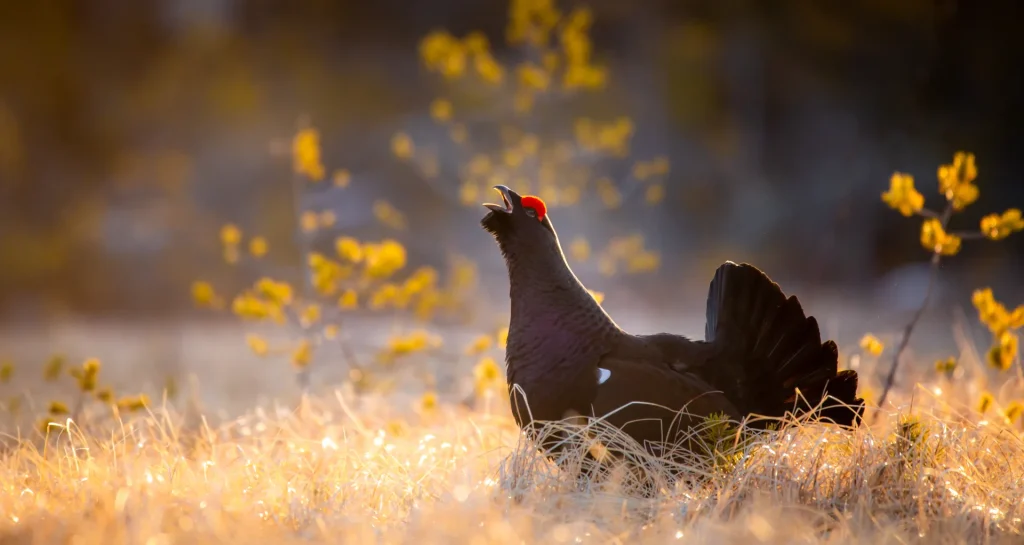
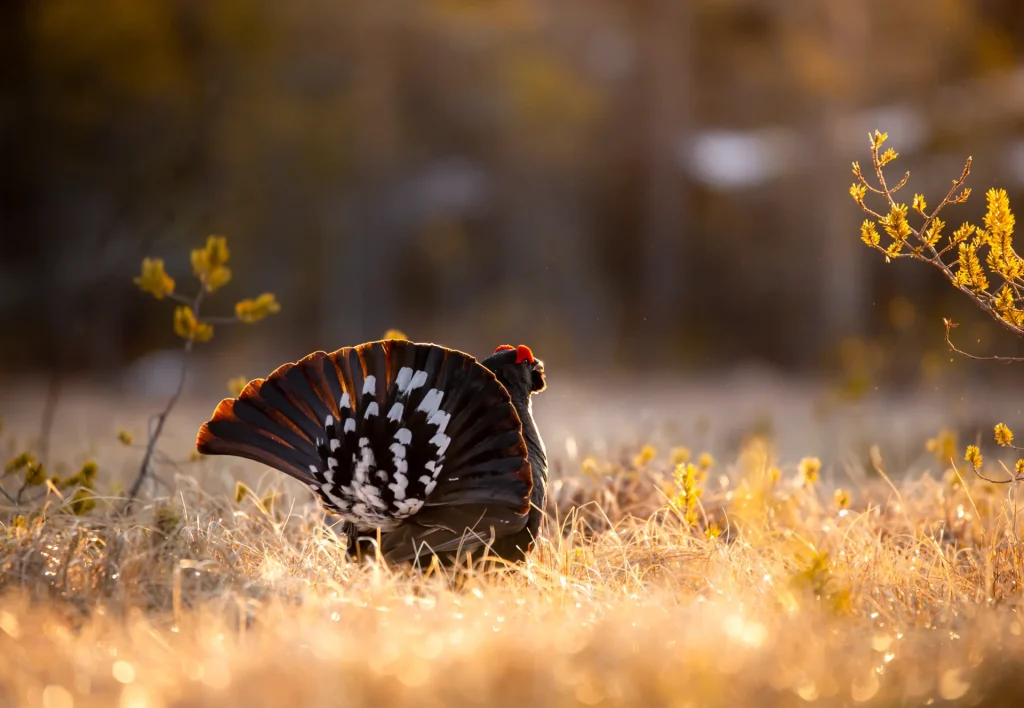
Physical and behavioral characteristics
The black grouse takes its name from its feather-like tail, which resembles that of a lyre. Also known by its scientific name Tetrao Tetrix, this alpine bird is distinguished by the splendor of its plumage, which varies between males and females.
The black grouse measures between 50 and 60 cm and weighs around 1,5 kg. This emblematic species of alpine fauna bears a striking resemblance to a large hen, which also gives it the nicknames birch rooster or little grouse rooster.
“The male black grouse has black plumage with blue highlights. Its wings are brownish-black with a small white bar. The underside of the wings and tail are white. The tail ends in the shape of a lyre. Above the eye, a red wattle, of variable size, highly developed in spring, surmounts a short beak. »
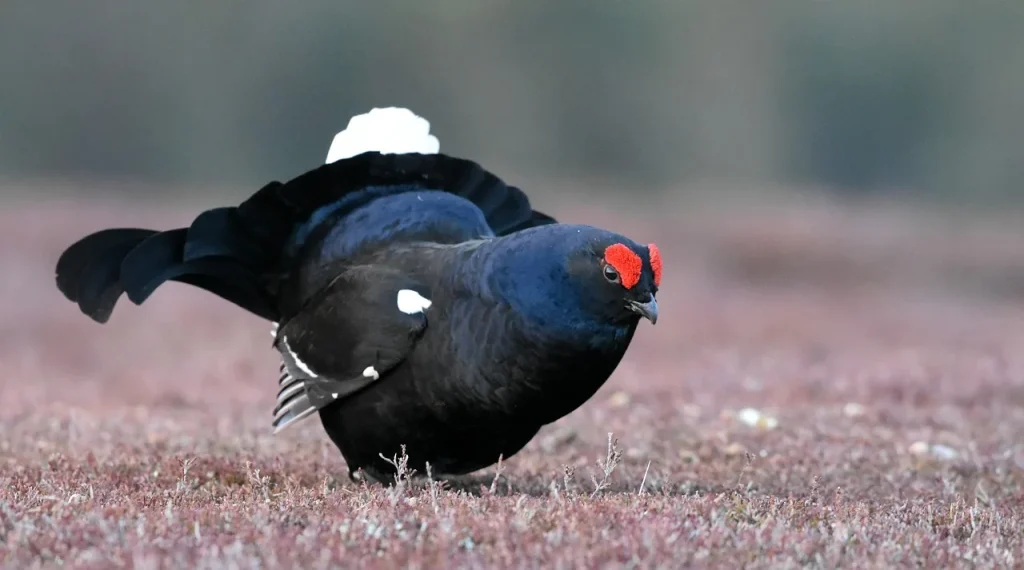
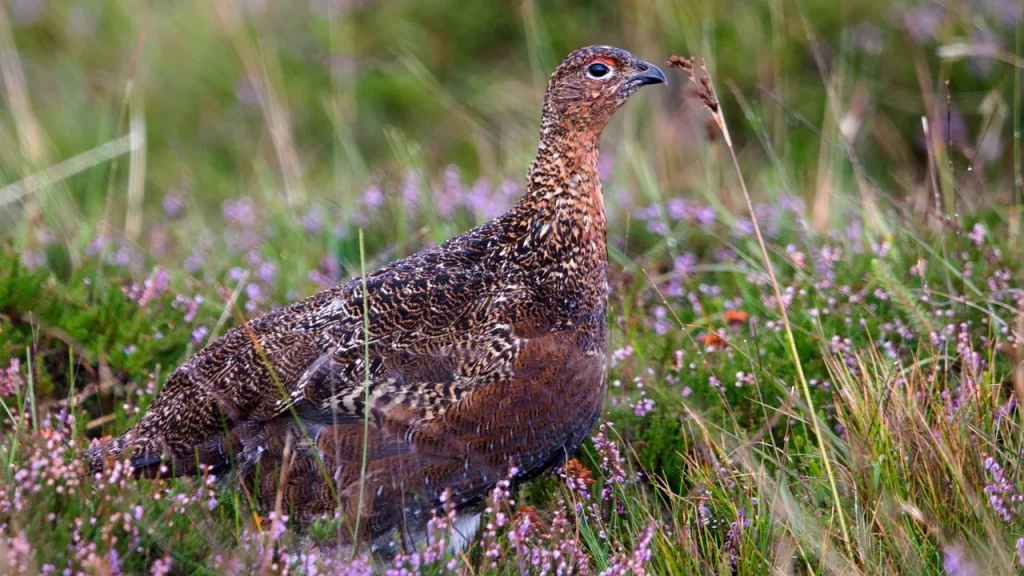
“The female has a reddish-brown livery barred with black. The tail is barely forked. »
Source: oiseau.net
How does this forest bird feed?
Mainly vegetarian, our little mountain rooster feeds on leaves, buds, flower seeds, fruit berries. Rigorous climate obliges, it completes its diet with small insects such as spiders or various invertebrates...
Where does the black grouse live?
Black grouse inhabit a vast geographical expanse, stretching from Eurasia to China, Russia, Mongolia and northern Kazakhstan. In Europe, they are mainly found in Scandinavia, the Baltic countries, Germany, Switzerland and France.
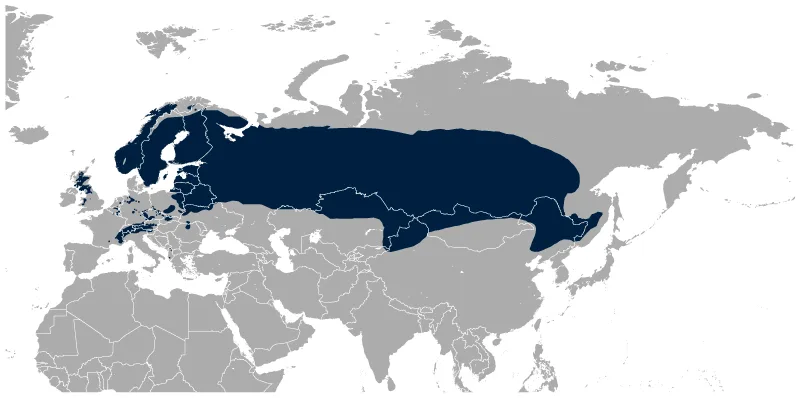
Black grouse are particularly fond of mid-mountain wooded areas with coniferous forests, such as found in our beautiful region at the foot of the Mont-Blanc massif.
Echoing its diet, this gallinaceous bird shows a marked preference for places where small shrubs proliferate such as rhododendron, bilberry, blueberry, cranberry, heather, calluna, etc.
The habitat of this forest bird can extend up to a maximum altitude of 2300 meters.
Responsible observation of the Black Grouse in its natural habitat
During the winter, the black grouse builds shelters under the snow, similar to small igloos, to protect itself from the cold. It is for this reason that the presence of hikers or off-piste skiers in their habitat areas can disturb them and lead to the destruction of winter nesting sites.
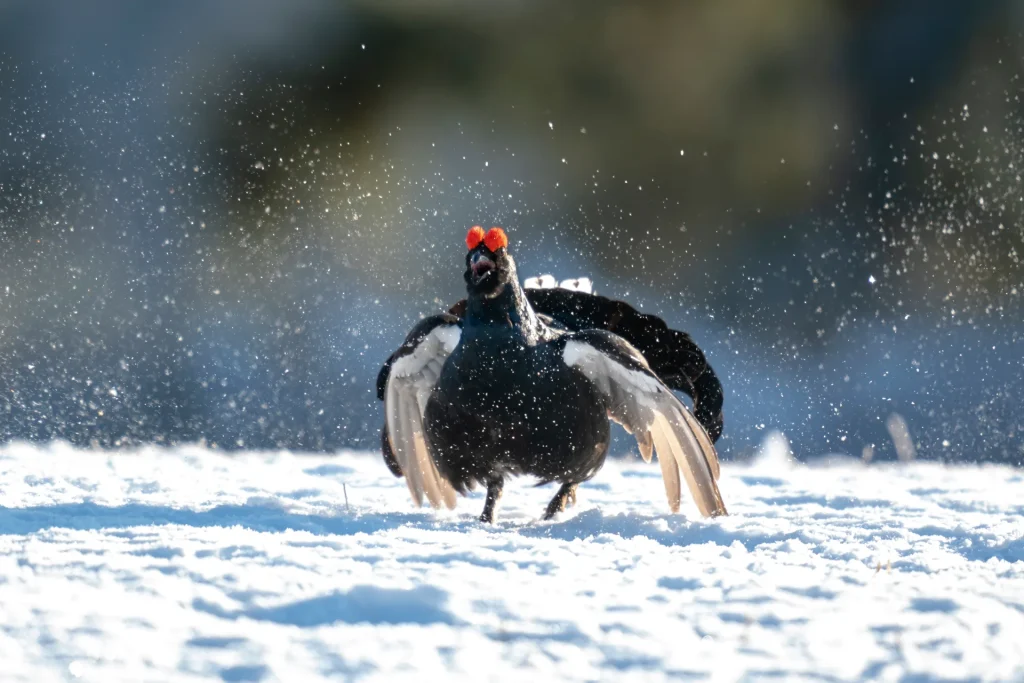
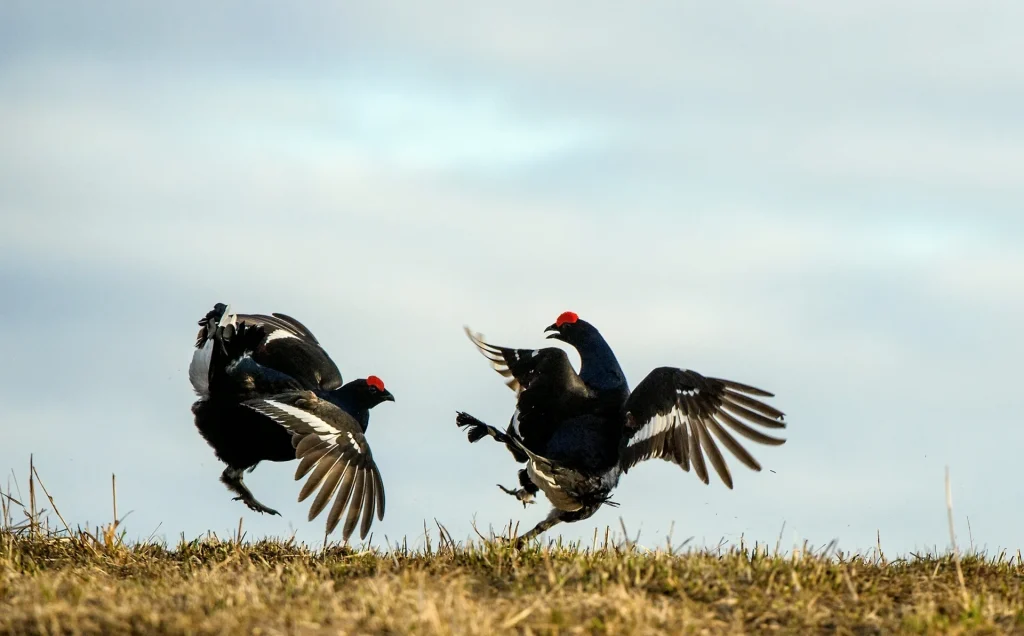
The ideal time to observe black grouse is spring, when males engage in courtship displays to woo females and establish territorial dominance.
During these displays, which take place mainly on plateaus or bogs called “leks” or display areas, the males spread their lyre-shaped tails while emitting unique sounds such as clucks.
Follow the black grouse trail in Megève to unlock its mysteries
Whether you are an ornithology enthusiast or simply looking for a pleasant walk in the forest, how about enriching your family hikes an additional playful dimension?
By walking the black grouse forest trail in Megève, you will have the chance to cross the territory of this emblematic bird of our mountains. Thanks to the information marking the journey towards the Frasses hut, every step you take will bring you closer to understanding this alpine gallinaceae.
The program of this exploration also includes the crossing:
- of spruce forests,
- moors populated by rhododendrons and blueberries,
- old alpine pastures along the ridges
- before reaching an exceptional viewpoint over the Aravis, Mont-Blanc and Vanoise massifs, in the distance.
Black grouse at risk: A symbol species under close surveillance
Black grouse are very sensitive animals, which is why they have benefited for several years from measures to protect their habitat and breeding areas.
Various reasons have indeed prompted Europe and the French government to put in place these protective measures, which we will list below.
1. Restricted habitat and degradation of alpine areas
As previously discussed, black grouse are closely associated with alpine and subalpine habitats, characterized by coniferous forests, heaths, bogs and glades.
The degradation of these areas, caused by urbanization, intensive agriculture, unregulated tourism and climate change, seriously threatens their habitat and their survival.
2. Vulnerability to human disturbance
These mountaintop birds are extremely sensitive to human disturbance, especially during the breeding season.
Disturbance from recreational activities, such as hiking and backcountry skiing, can lead to nest abandonment, exposing eggs and chicks to predators and the elements.
3. Population fragmentation
The fragmentation of black grouse populations, caused by the expansion of infrastructures and the isolation of habitats, leads to a reduction in genetic diversity, thus increasing the risk of local extinction.
4. Illegal hunting
In the past, unregulated hunting has played a significant role in the decline of black grouse populations. Fortunately, strict protective measures have been put in place to prohibit the hunting of this vulnerable species.
However, it should be noted that the black grouse is still classified as game in France, which means that in areas outside the protection zones, its hunting (subject to strict regulations) remains authorized.
5. Importance of the black grouse in the preservation of the alpine ecosystem
The Black Grouse plays a crucial role in the alpine ecosystem by acting as an indicator of the overall health of these habitats. The protection of this galliform species also benefits many other plant and animal species that depend on the same fragile habitats.
The black grouse, a threatened bird: what measures for its survival?
In the face of the above threats, governments and environmental organizations have taken important protective measures for the Black Grouse and its habitat:
- Strict regulations have been put in place to restrict human activities in sensitive areas during crucial breeding periods.
- Reintroduction and active habitat management programs have also been initiated to sustain existing populations and restore degraded areas.
- Educational initiatives and awareness campaigns on the importance of the conservation of this species is an essential element to ensure its preservation.


